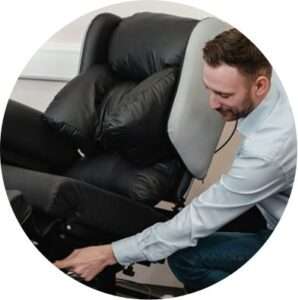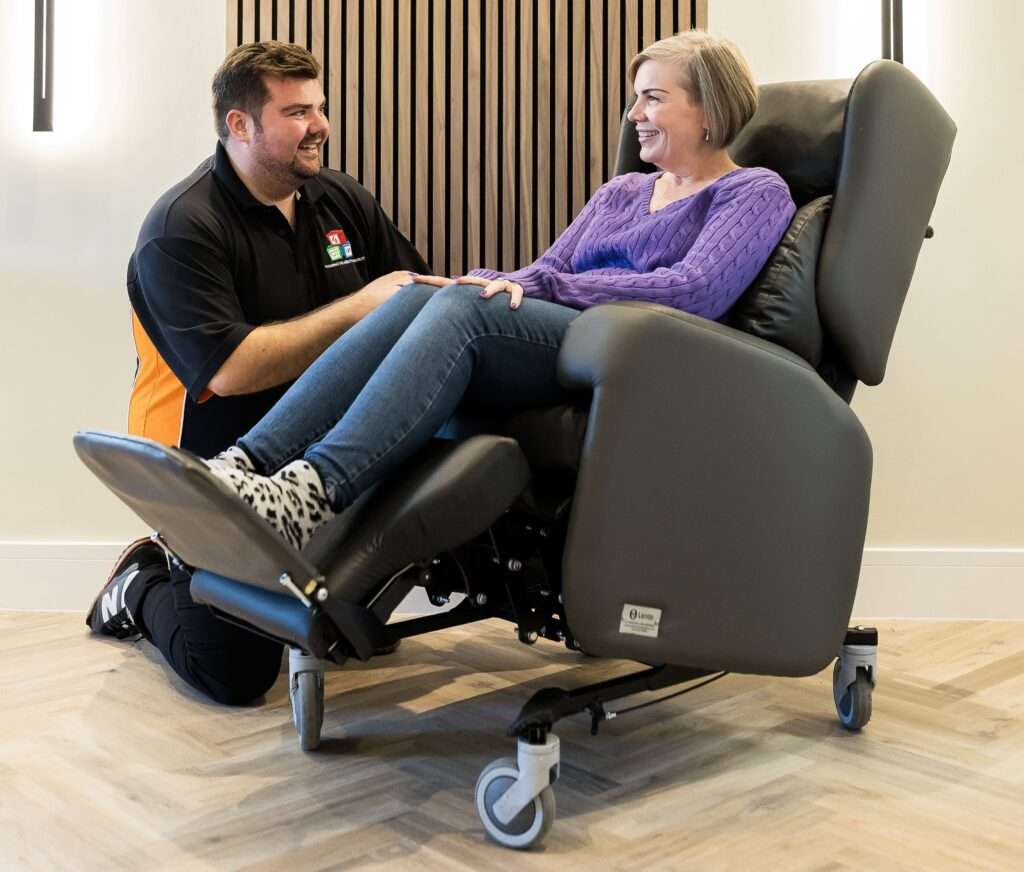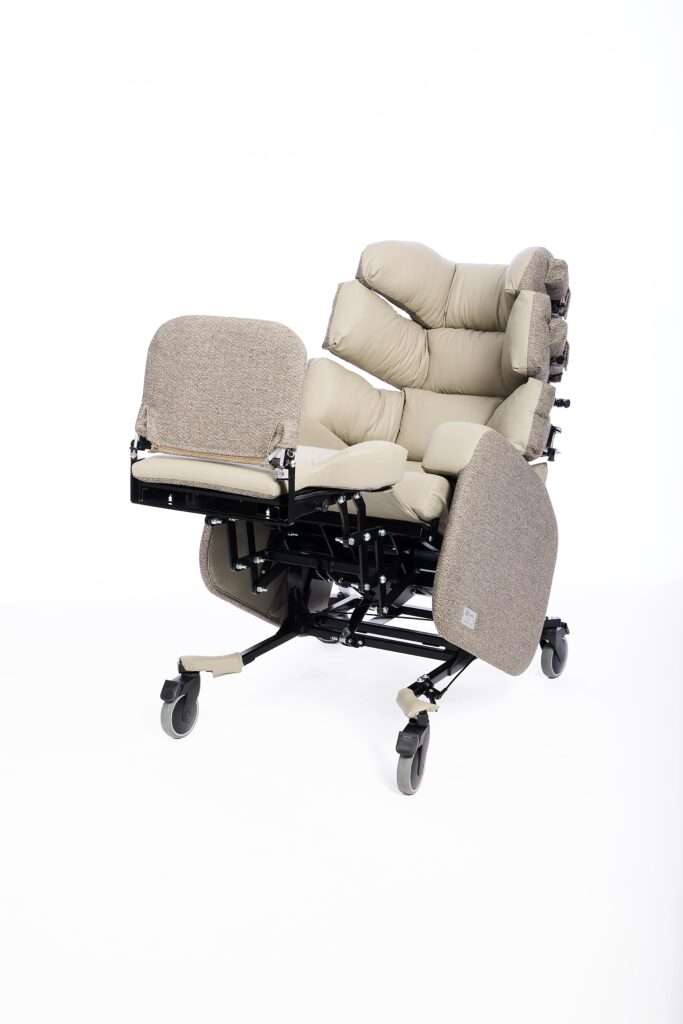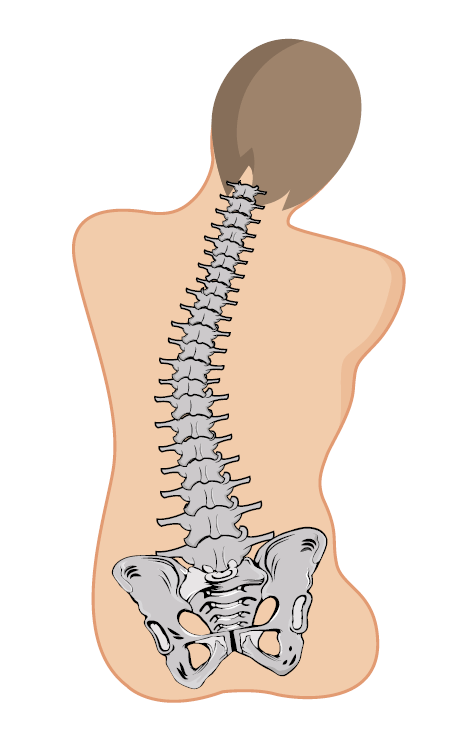Dysphagia is the medical term for difficulty with chewing or swallowing. This can be a common symptom of people who have experienced strokes or traumatic brain injuries.
Dysphagia can range in severity, from having difficulty with chewing and swallowing to not being able to swallow at all. It can cause a range of issues, from choking and regurgitating food to weight loss, dehydration and chest infections (aspiration pneumonia).
This condition can significantly affect quality of life and needs careful management, however there are seating functions that can assist with the management of this condition.
Jump straight to…
What is Dysphagia?
Normal chewing and swallowing usually happens without much thought, but is a complex process involving the motor cortex, brainstem, cranial nerves and other muscles.
Getting back to the terminology again, let’s look at the two main types of dysphagia:
- Oral dysphagia is problems with chewing and controlling food and drink in the mouth.
- Pharyngeal dysphagia is difficulty swallowing food and drink, which can lead to aspiration problems (food getting caught in the airways and lungs). The epiglottis is a flap of skin that covers the larynx when you swallow, preventing food going down ‘the wrong way’.
Brain injury can result in damage to the areas of the brain that control these functions, and the nerves in the face, head and neck that operate when we chew or swallow.
Sometimes even the sense of taste or small can be affected by brain injury, leading to loss of saliva production.
It is important to have this condition accurately diagnosed by a GP and experts like speech and language therapists and dietitians, who carry out a range of assessments to diagnose it.
Treatment and Management of Dysphagia
Treatment programmes for dysphagia are individualised to the patient, and can range from exercises to strengthen the muscles, modifying diet with pureed food, or inserting a feeding tube.
In terms of everyday management, interventions in sitting posture can be used alongside these treatments to reduce the risk of aspiration, improve digestion, and promote independence at mealtimes.
Maintaining an upright posture when eating is important to use gravity to full effect and minimise the effort needed to swallow.
Maintaining an upright position
Sitting Posture
Sit in an upright position with a 90-degree angle at the hips.
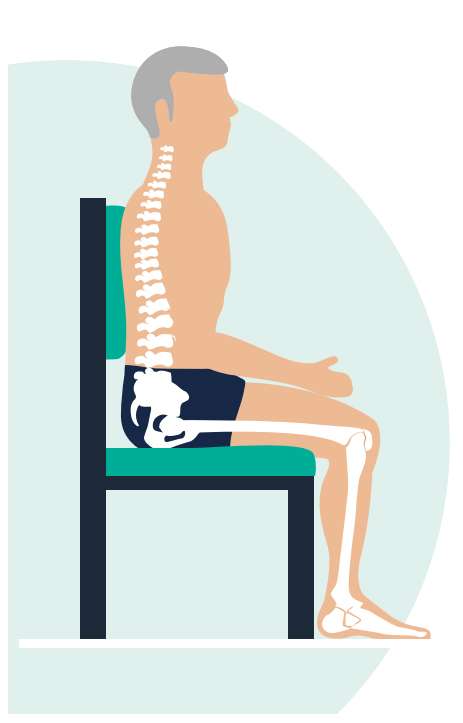
90 degree sitting angle
Seating Function 1: Seat height and depth adjustment should ensure the user’s knees are hips are at 90 degrees. These functions are available across our Lento range of chairs, including the Lento Care Chair and Lento Mobile.
Head Position
Tilt the head slightly forward, and tuck chin towards the chest. This helps protect the airway and promote safer swallowing. Avoid leaning the head back when swallowing.
Seating Function 1: An adjustable head support or horseshoe head cushion supports the head, preventing from tipping it back and can be adjusted to for each patient so their head is tilting slightly forward.
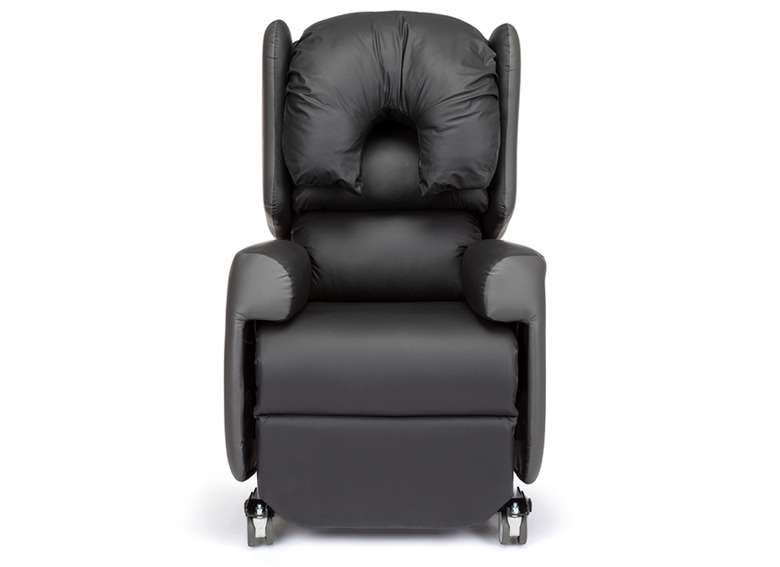
Horseshoe head cushion
Seating Function 2: A slight backward tilt (up to 10–15°) using tilt-in-space or backrest recline can be used after swallowing to aid comfort and digestion, but the person should return to upright during eating or drinking.
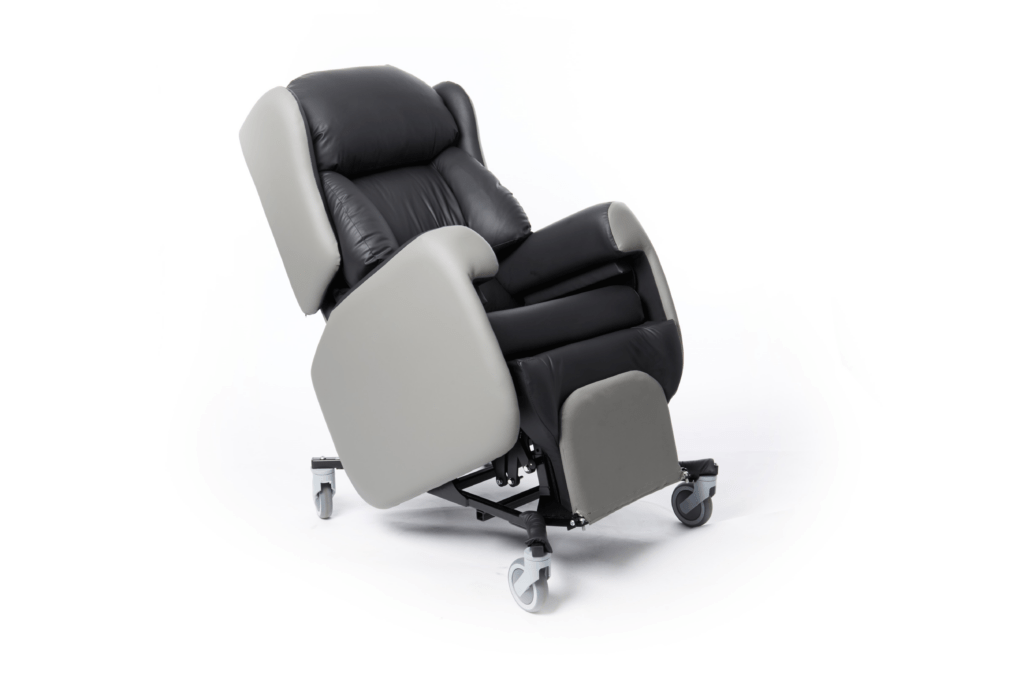
Trunk Alignment
Sit in a midline position with adequate support on each side.
Seating Function 1: Lateral supports can help maintain balance if the person has weakness on one side or an asymmetrical posture.
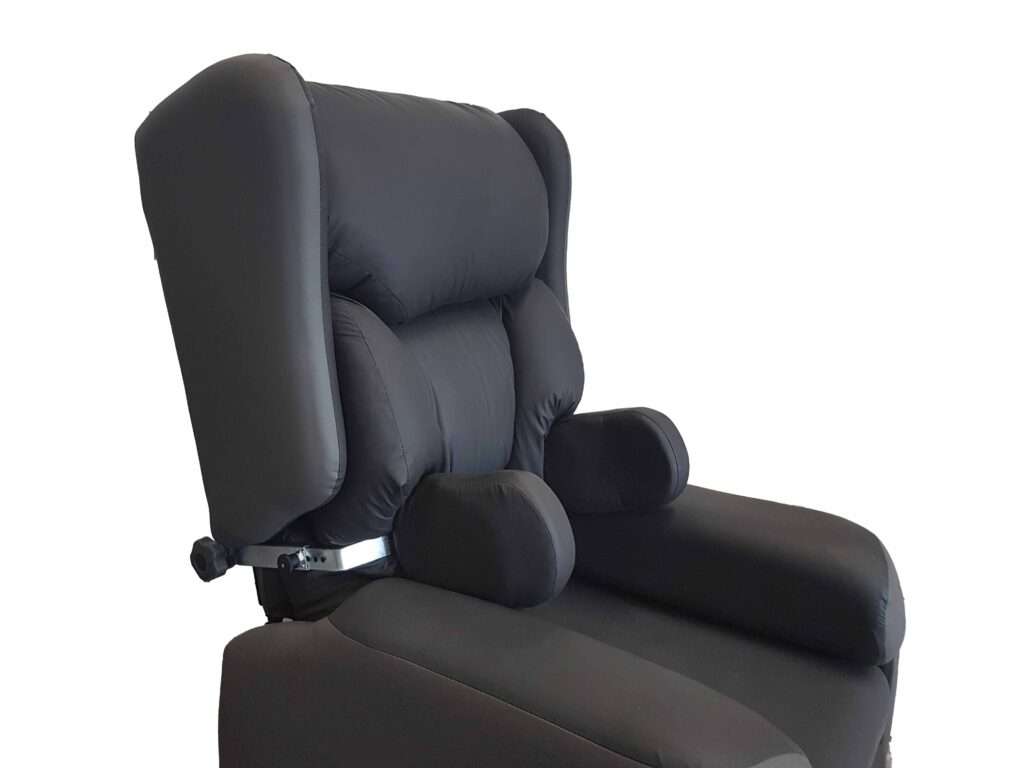
Fixed metal lateral supports
Seating Function 2: The armrests in our Lento range are height adjustable to support the forearms at the right height when eating.
Feet support
Ensure feet are flat on the footplate to improve overall postural stability.
Seating Function 1: Angle and height-adjustable footrest. This is available with the Lento Care chair.
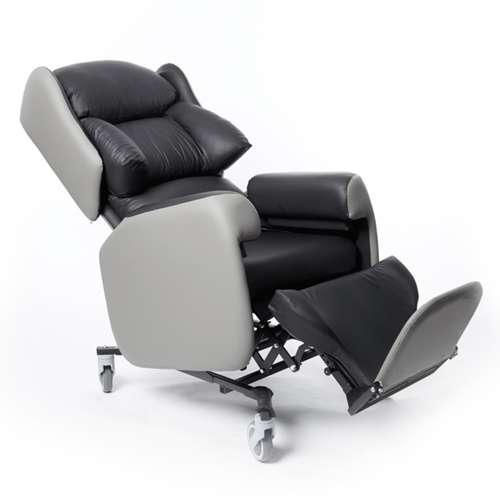
Other Seating Functions for Managing Dysphagia
Using a Food Tray
A removeable food tray can be attached to the patient’s chair, providing a stable surface for mealtimes. This can be used with the Lento Care Chair and Lento Mobile, and attaches easily to the armrest bracket. This ensures they can stay seated comfortably in their care chair with all necessary postural adjustments to assist swallowing, with all food, water and medications within easy reach. Taking alternate drinks between each mouthful is advisable to assist lubrication and swallowing.
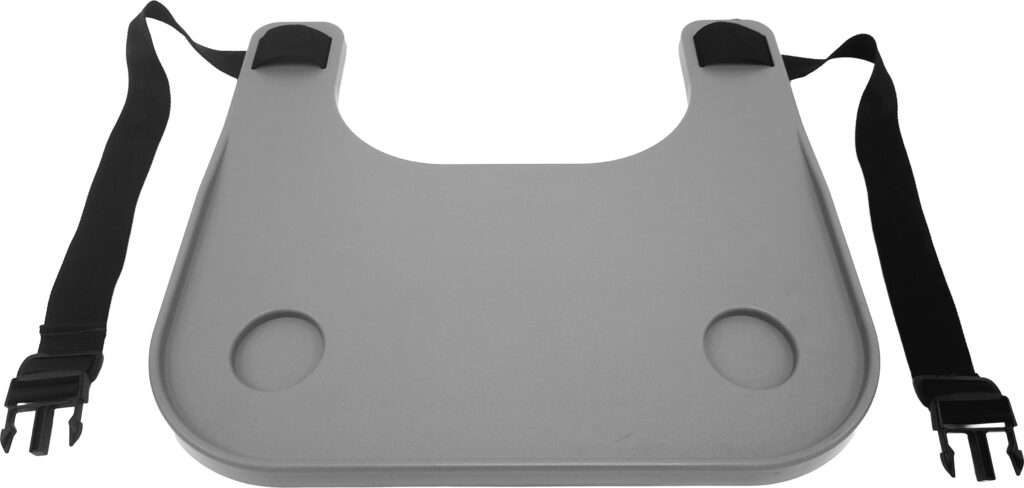
Lap Belts
Lap belts or positioning belts help maintain safety without restricting movement.
Overchair Tables
Adjustable overchair tables may be useful where trays cannot be fitted or are impractical.
Conclusion
Seating and posture play an essential role in the safe management of dysphagia. The correct positioning helps protect the airway and supports effective swallowing.
Gaining the correct sitting posture with the right accessories, such as head supports, trays, and stable seating systems, can significantly reduce aspiration risk and improve quality of life.
Collaboration between speech and language therapists, occupational therapists, and physiotherapists ensures that each person’s seating plan is tailored to their specific needs, promoting comfort, dignity, and safety during mealtimes.
Frequently Asked Questions (FAQ)
Q: Why is posture so important for people with dysphagia?
A: Good posture helps align the head, neck, and torso for optimal swallowing function. It also reduces the risk of food or drink entering the airway.
Q: Can tilt-in-space chairs be used during feeding?
A: A small degree of tilt may be used for comfort, but feeding should always occur in a fully upright position. Tilt can be introduced gently after eating to aid relaxation and digestion.
Q: What professionals can help with seating for dysphagia?
A: A multidisciplinary team, including occupational therapists, physiotherapists, and speech and language therapists, can assess and recommend appropriate seating systems.
Q: Are specialised chairs necessary for everyone with dysphagia?
A: Some individuals manage well with standard chairs if they provide good posture and stability. However, others with reduced muscle control or mobility may benefit from custom seating or specialist supportive chairs.



